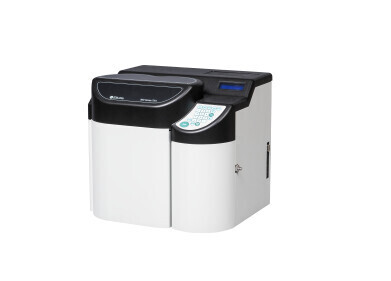Gas Chromatography
How Does Indoor and Outdoor Pollution Vary? - Chromatography Investigates
Sep 06 2019
Many studies have shown a link between air pollution and poor health. The UK Government states that poor air quality is the largest environmental risk to public health in the UK. Long term exposure can cause chronic illnesses including cardiovascular and respiratory diseases - illnesses that can lead to a reduced life expectancy.
But if the air outside is so polluted, are we better staying indoors? Well, the results of a recent study carried out in schools in Spain suggests that indoors may be even more polluted than outdoors. The study - The relationship between indoor and outdoor levels of PM10 and its chemical composition at schools in a coastal region in Spain - was published in the journal Heliyon and suggests that indoor ait is more polluted than outdoor air.
Particles in the air
There are many different types of air pollution, but one type that has received a lot of press in recent years is PM10 - particulate matter 10 micrometres or less in diameter. PM10 is associated with diesel engines primarily, especially in towns and cities. But, PM10 air pollution is also formed as the result of industrial and construction processes.
Research has shown that PM10 pollution has resulted in an increase of respiratory illnesses including reduced lung function, asthma, chronic bronchitis as well as cardiac arrhythmias. Children are likely to be affected by air pollution more than adults. They have a higher breathing rate and their respiratory systems are not fully developed. Children also spend a considerable amount of their day indoors, especially during school hours. Could they be exposed to more pollution indoors than if they were outside?
It's dirty inside the classroom
It was with these things in mind, that the researchers on the above referenced study set out to compare the concentrations of PM10 particles both inside and outside the classroom. They also analysed the type of particles they found to try and ascertain where the air pollution came from - inside or outside the classroom. They sampled the air in seven primary schools located in a Mediterranean area having an industrial centre used to treat mineral raw materials.
The air samples were collected across a school year when the pupils were in school and then analysed to determine the mass of PM10 particles. The PM10 particles were then analysed to determine the type of contaminant using inductively coupled plasma mass spectrometry. Gas chromatography can also be used to analyse gas samples as discussed in the article Why do you Need to Measure BTEX in Ambient Air?
The team report that:
‘PM10 concentrations and the levels of the chemical elements and anions analyzed in this fraction of particulate were greater in all cases inside schools than outside. This indicates the presence of indoor emission sources of importance.’
The team suggest that cleaning processes inside the building could be contributing to the higher concentrations of PM10 particles. Staying indoors could really be harming your health.
Digital Edition
Chromatography Today - Buyers' Guide 2022
October 2023
In This Edition Modern & Practical Applications - Accelerating ADC Development with Mass Spectrometry - Implementing High-Resolution Ion Mobility into Peptide Mapping Workflows Chromatogr...
View all digital editions
Events
Jan 20 2025 Amsterdam, Netherlands
Feb 03 2025 Dubai, UAE
Feb 05 2025 Guangzhou, China
Mar 01 2025 Boston, MA, USA
Mar 04 2025 Berlin, Germany














